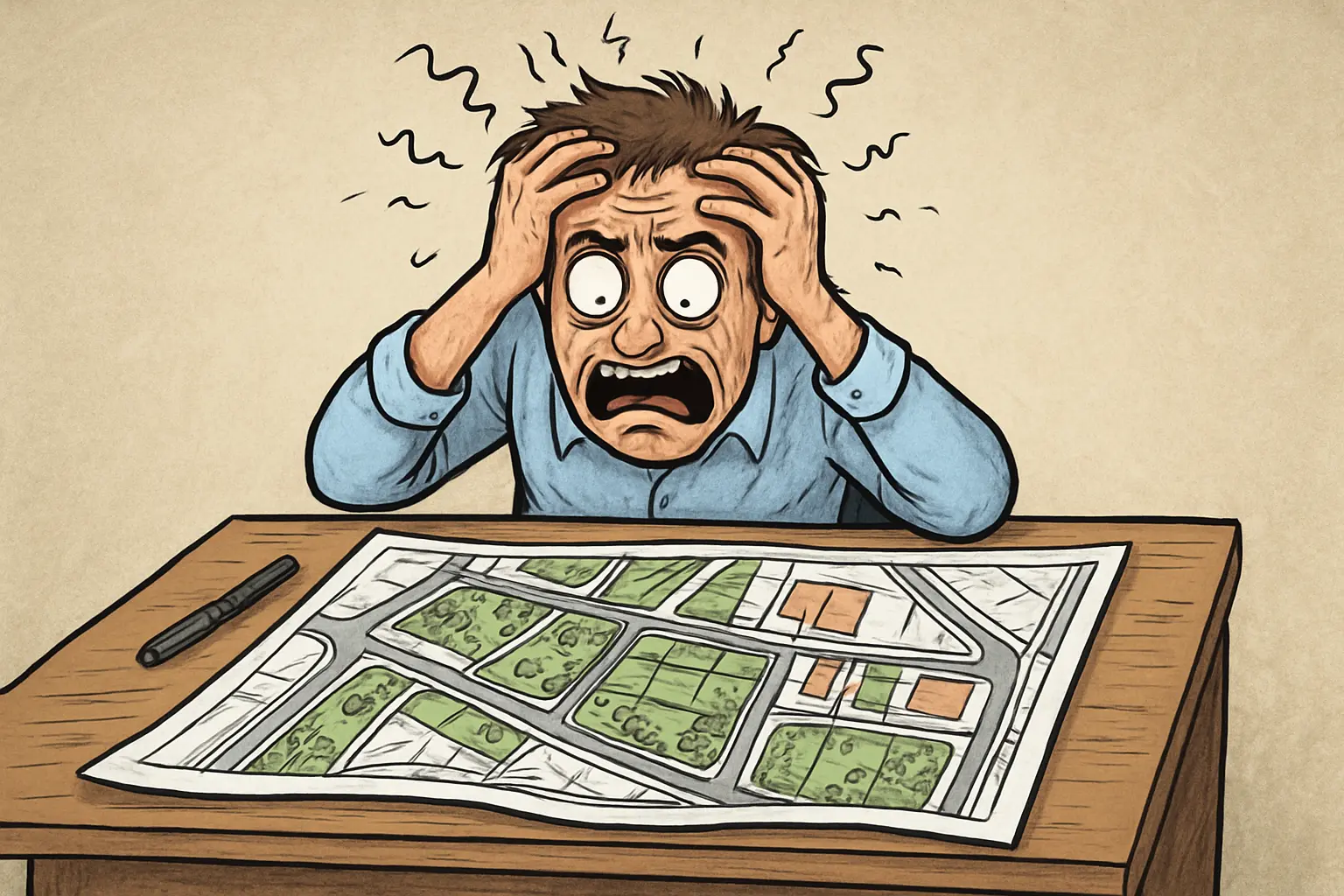Reading a Site Plan
Site plans are like the instruction manuals of the built world. Whether you're a planner, a resident, or someone staring at their first permit packet wondering what the squiggly lines mean, site plans can look intimidating at first glance.
But don’t panic.
With a little guidance, you can go from confused to confident in no time.
This guide breaks down how to read a site plan step-by-step, with tips to help you interpret the details without pulling your hair out. Let’s get into it.
1. Start with the Basics
Before diving into the nitty-gritty, make sure you know what you're looking at:
- Title Block: Usually found in the bottom right corner. It tells you the project name, location, scale, date, who drew it, and sometimes who reviewed it.
- North Arrow: Essential for orientation. You need to know which way is up (literally).
- Scale: Common scales for site plans are 1” = 10’, 20’, or 30’. Understanding scale helps you know how distances on the plan translate to real-world measurements.
2. Understand the Parcel Layout
- Look for the property lines (usually bold or dashed lines). Everything inside those lines is fair game for development.
- Spot easements and setbacks (often shown as dashed lines). These indicate areas where building isn’t allowed.
3. Identify the Major Elements
- Structures: Look for building footprints, labeled with dimensions and use.
- Driveways, Sidewalks, and Parking: These are usually shaded or hatched differently.
- Landscaping Areas: Sometimes marked with circles for trees, symbols for shrubs, or labeled as planting beds.
- Utilities: Look for symbols or lines indicating water, sewer, electric, and stormwater features.
4. Read the Notes (Even If You Don’t Want To)
Site plan notes often explain the weird stuff you’re seeing. They might include:
- Construction details
- Materials to be used
- Drainage and grading info
5. Check Compliance with Zoning and Planning Policies
This is where planners earn their coffee. Compare the proposed site layout with zoning requirements and ensure alignment with broader planning policies:
- Does the structure meet setback requirements?
- Is the lot coverage within allowable limits?
- Are parking spaces and landscaping requirements being met?
- Is the project consistent with the Land Development Code?
- Does it support the goals and policies outlined in the Comprehensive Plan?
6. Look for Red Flags
As you get more comfortable reading site plans, you’ll start spotting things that don’t add up:
- A driveway that leads to nowhere
- A building that crosses a setback line
- A building that crosses an easement
- A parking area with no accessible route
Final Thoughts?
You Got This.
Reading a site plan doesn’t require a degree in architecture, just a bit of patience and a sharp eye. Like any skill, it gets easier the more you do it. So next time someone hands you a plan, take a deep breath, find the north arrow, and remember, you’re in control.
Happy reviewing.
Up next: Your First Planning Job, What They Don't Tell You In School
%20(1200%20x%20237%20px)%20(300%20x%2059%20px).webp)


.webp)


